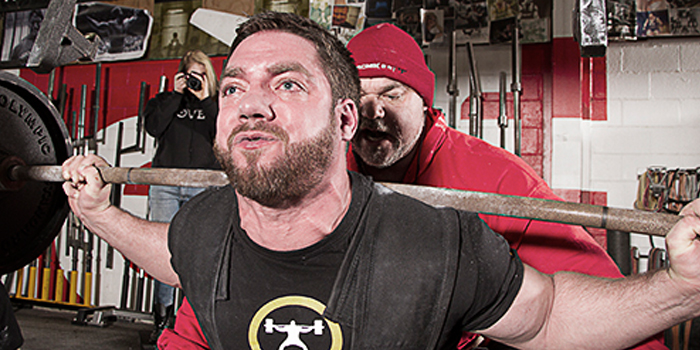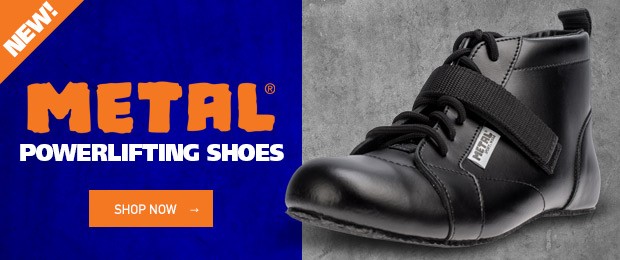
The deadlift is a unique movement out of the Big Three, because when you’re doing a heavy single there is no eccentric (lowering) part of the lift. You approach the bar, setup, and pull; and you either get the lift or you don’t. Aside from hitching, there’s no way to cheat the lift (like cutting your depth short in the squat or bouncing off your chest in the bench). I’ve heard many times that “there’s no technique to deadlifting, you just grab the bar and pull." While I can understand what these people are usually trying to say (be aggressive with the lift), I have to disagree that the deadlift isn’t a technical lift. Because its concentric-only (in terms of bar path, you can get some stretch reflex by dropping your hips down quickly), and relies so much on leverages (usually this is the lift that people can do the most weight relative to their bodyweight), being out of position just a little bit can be the difference between a good lift and having the weight crash back down the floor.
RELATED: Find Your Weak Points By Becoming Strong
Deadlift lockout is a great example of this. I always emphasize what I’ve heard from Dave Tate countless times, which is that all “weak points” in a lift can be physical, mental, or technical (or a combination of the three). Usually when someone misses a deadlift off the floor (aka doesn’t even move it) or below the knees, I’ve found that it tends to be a physical or mental block. The exception for this is sumo deadlifting, where technique in the setup is much more crucial to getting the bar to break the floor (versus with a conventional deadlift where you can usually muscle the weight up at least a little bit off the floor).
For deadlift lockout however, I’ve noticed that many lifters are very quick to identify a missed lockout as a physical weakness, and quickly turn to something like heavy rack pulls with 150% of their max deadlift to fix the weakness. While heavy rack pulls can be a great movement, just because you missed the lift at lockout doesn’t mean you necessarily need to practice the actual lockout range-of-motion over and over again to get stronger. Sometimes what you did before you got to lockout, or your body position at lockout, is what’s preventing you from completing the lift. In this case, a technical fix can make a huge difference in completing the lift.
For that, here are three technical reasons you may be missing at lockout and how to fix them:
Your Stance is Too Narrow
This applies to conventional deadlifting and is a classic example of needing to adjust things to your body type. There are some very strong deadlifters who pull with a very narrow stance (even as close as having their heels only a few inches apart). For a long time I tried deadlifting with a narrow stance just because I’d seen so many others do it successfully. After a while, however, I realized that I couldn’t actively squeeze my glutes (which are necessary for lockout) with a narrower stance. Moving my stance just an inch or two wider allowed me to bring my hips through easier and improved my ability to fight through lockout. An easy way to determine this yourself is to stand in your normal deadlift stance, and while standing up straight try to squeeze your glutes hard. If you feel like you can’t, then try bringing your stance a touch wider.
You’re Rushing Your Setup
It’s important to be aggressive when you approach the deadlift. Many lifters take the “grip and rip” approach when they pull. This can work well (especially when creating that stretch reflex I mentioned earlier), but only if you can do the following:
- Get your air/abs tight
- Get your lats tight/back locked into position
- Pull the slack out of the bar
- Get your weight in your heels
If you can do the above and setup and pull quickly, then you’re good to go. Often times, however, when a lifter tries to rush setup, one of the above items gets thrown off. And if you fail to do any of the above correctly, you will end up with your weight on your toes, the bar drifting away from you, and your back too rounded to lock out your deadlift.
WATCH: Table Talk — Finding Solutions to Deadlift Weaknesses
This is where it’s important to remember that how you start is how you finish and if you want to be in a stable position to lock out your deadlift, you need to be in a stable position to start it.
You’re Trying to Lock Out with Your Back Instead of Your Glutes
This is one of the most common mistakes I’ve seen the beginners I’ve worked with make, but it can plague even intermediate and advanced lifters when the weights get heavy. While the deadlift definitely works your back, you want to make sure you’re using your glutes to lock out your hips at the top of the lift. If you try to arch your back to lock out instead, your knees will shift forward (causing you to hitch), and you won’t be able to lock out your hips and knees simultaneously to finish the lift.
Lock in your back at setup, and then as you pull and the bar passes your knees make sure to squeeze your glutes and shift into a posterior pelvic tilt (JL Holdsworth has written a really good article about this, but basically think about “tucking your tail” and doing the opposite of arching your back). If you can squeeze your glutes early and stay in a good position, you’ll be able to lock out correctly and finish the lift.
These are just a few technical mistakes that may be keeping you from locking out your deadlifts. This isn’t an all-inclusive list, but it is a good place to start as you work on the technical aspects of your lifts. Remember at the end of the day you always have to get physically and mentally stronger, and these things will help you to utilize that hard earned strength.











11 Comments